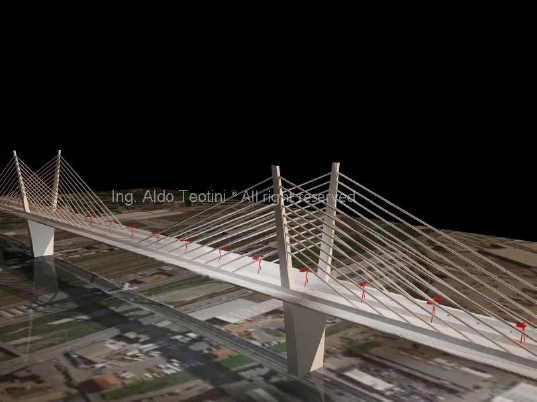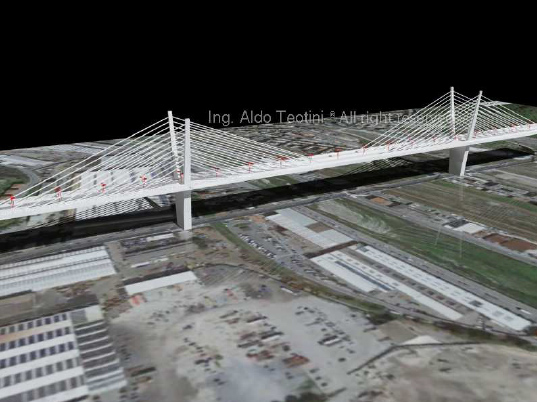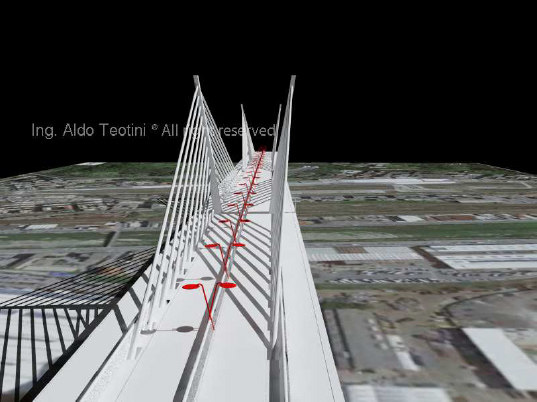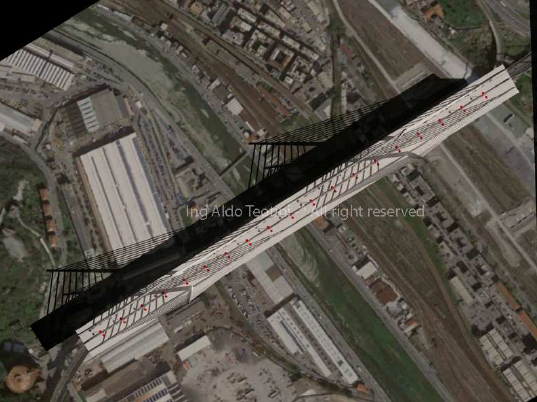Since August 14, after the Morandi Bridge collapsed, there has been much discussion about the safety of the structures and users of Italian highways.
Social media has seen the flow of too many ideas and opinions about the possible causes of the incident. There were also too many solution hypotheses for the construction of a new bridge that would allow a smooth and safe traffic flow within the city of Genoa.
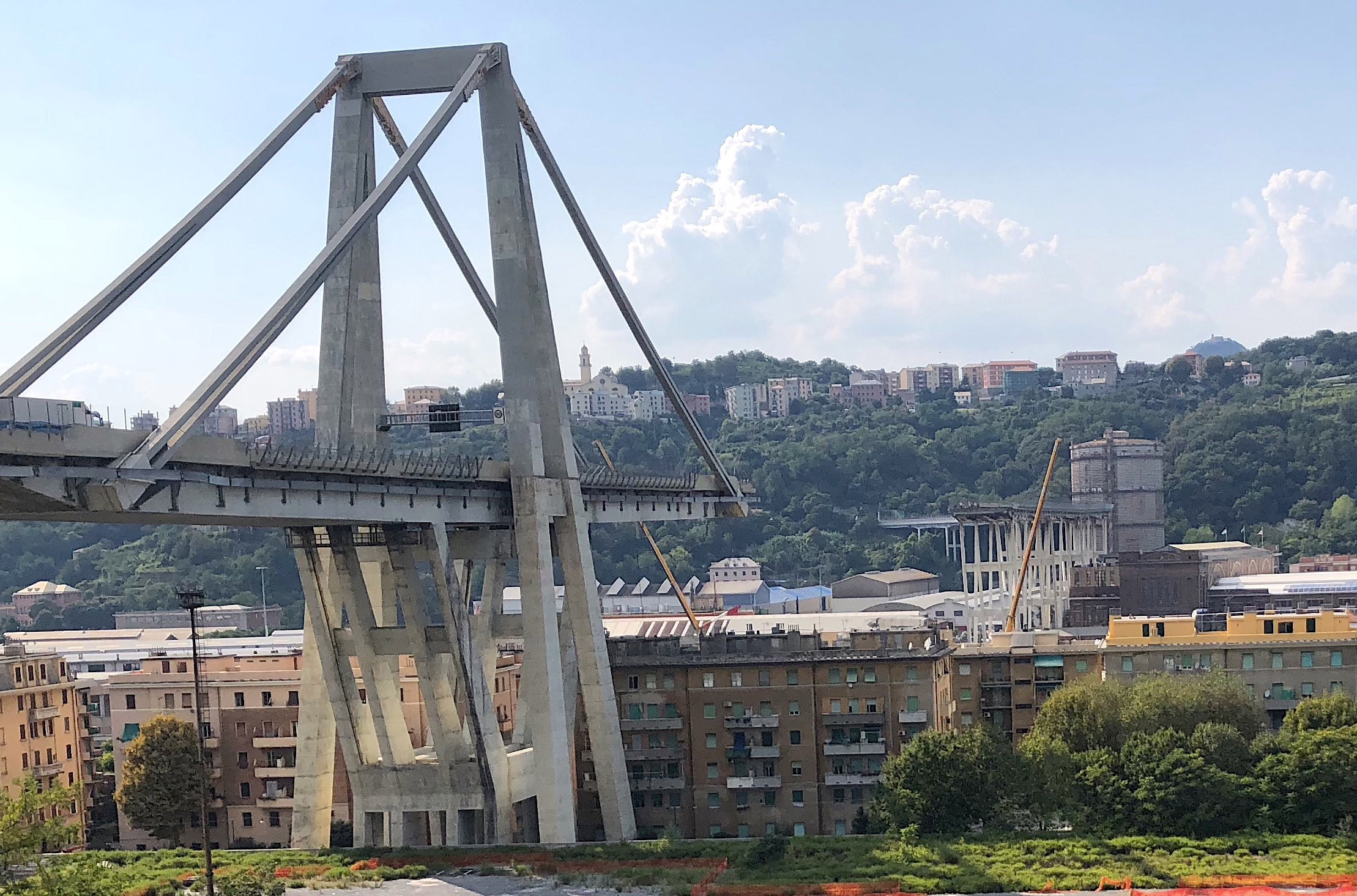
We have been supporting renovation and modernization operations for years by surveying and monitoring structures, and we know how much maintenance or, on the contrary, neglect, affects the life of the structures themselves.
Are the causes of the collapse to be found only in the area of maintenance?
We preferred to have a professional to answer the questions. For this purpose, we offer our interview with Eng. Teotini, who on social media has spoken out on the issue, offering interesting insights. We quote his answers to our questions in entirety below, also giving voice to his design proposal.
What causes lead to bridge collapse?
The collapse of a bridge is never a random event, and like any other structure, made by the hand of man, it has a life that must be placed in relation to its maintenance.
We can draw a parallel with our major monuments that have been through centuries of history because they have always been attended to, cared for, maintained, and others that have not had the same attention are in a precarious condition or collapsing, as has happened in Rome recently. Bridges, like monuments, are man-made artifacts and must be followed through their life cycle to remedy the aggression of time, material deficits, and human mistakes.
The collapse of the Genoa bridge seems emblematic in relation to this issue. As far as we can learn from the information coming from the media about its state of preservation and the problems that had been afflicting the structure for some time (noted by the designer himself since 1980), the necessary attention was not given. Unfortunately, economic reasons, or various interests, often prevail, leading to a failure to give serious consideration to signs of critical issues that every structure gives ample notice of.
In your opinion, are there any categories of bridges that require more maintenance than others?
No, in my opinion every structure, small or large must have the same attention and therefore the same consideration in the maintenance aspect. The greater or lesser effort depends on the scale factors of the work and the technique with which it was built, and so it is clear that an important element is the training of the inspectors.
Nowadays, hiring a whole host of young engineers, to inspect bridges, viaducts or overpasses is a publicity spot because those who are in charge of the inspection must be experienced and therefore must be properly trained and prepared. Maintenance is a key factor in preserving the integrity of structures.
In your opinion, what percentage of the blame for the collapse that occurred in Genoa can be apportioned?
From what we are told on television, the Genoa prosecutor has speculated on a number of responsibilities of people who, in various roles, in various contexts, may have played an important role in the occurrence of the events. It is not for me to say who bears the greatest responsibility.
As very often happens , serious events, such as the Genoa collapse, occur because each person, in his role, does not do a piece of his own duty or, out of ignorance, fails to assess the situation before him. There will be a judgment to define everyone’s responsibility.
There is one thing I would like to say, however, and it is addressed to fellow engineers. Unfortunately, our category is increasingly unheard by those who hold the economic levers of works management. Instead, it should be the other way around. Engineers who, I would remind you, “perform a function of public health protection” should have a primary role in the management of works and should exercise their role with consciousness and independence, without influence or conflict of interest. Very often, however, this does not happen.
Would you rebuild the bridge in the same way as Ing. Morandi?
As a proponent of an alternative solution to Eng. Morandi’s bridge, a solution that has not yet been considered, I would contradict myself if I stated otherwise. Every structure has its own life cycle and as such one must take note that the cycle of use of this structure was over.
However, there is a current of thought these days pushing for a rehabilitation of Pile 9, perhaps more for an aspect of timing and cost-effectiveness of the intervention. Otherwise, the structure is really in a bad state and in any case the conditions of use have changed, and it must be understood, and accepted, that even great works can be replaced by others that are more up-to-date in technique, materials, design, and just as great.
Safety and aesthetics: can they be two sides of the same coin, or must we compromise?
In my opinion, generally speaking, they are two different things. Aesthetics is a philosophical aspect of our life. It suggests the “feeling” that subjectively each of us feels in looking at a work of man. Aesthetics is related to our judgment of beautiful or ugly or the declinations in between. But it is not necessarily true that a safe work cannot be beautiful or vice versa.
If safety is combined in indulging a creative idea, as it is more of a technical aspect than an artistic one, we can achieve a work that is aesthetically appealing and safe at the same time.
We need to learn that safety has a cost exactly as important as that of the execution of an aesthetically pleasing work and that both are relevant to the enjoyment of an artifact. Security is instead perceived as a cost without refreshment, but often time has taught us otherwise with very high human costs.
As for cable-stayed bridges, in my opinion these satisfactorily combine safety with aesthetic value. The cable-stayed bridge is certainly a beautiful bridge, but it is also safe since this aspect is inherent in the construction technique.
Is the public’s widespread fear of cable-stayed bridges somehow justified?
Techniques for the execution of cable-stayed bridges have evolved over time, and there are some compelling examples of this type of construction around the world. An example, in Italy is the Favazzina Viaduct on the Salerno Reggio Calabria highway in 2009, which contributed to the modernization of this highway.
In China, an up-and-coming country, numerous bridges of this kind are being built and even in the open sea, that is, in environments that are very aggressive because of the materials that are used. In my city there is one built in 1980 that still does its task of crossing the Arno excellently. Therefore, I believe that there is nothing to fear in crossing a cable-stayed bridge; what we need to fear, but this is a condition of civic education, is that someone, who is entrusted with our safety, does not completely do their duty to the community.
If you had to redesign the bridge today, what would it look like?
I have already mentioned that I am a promoter of a bridge solution different from the one being considered today and given to the city of Genoa by Arch. Renzo Piano. The structure is that of a cable-stayed bridge carried by two forks, made of reinforced concrete, about 100 m high from ground level, which with a single span (about 410 m) and lateral spans can span the entire valley at the height of the old bridge.
The shape and arrangement of the stays would allow for four center lanes with associated side emergency platforms. Beyond the stays, on either side, there can be an additional lane for public transportation or dedicated to bridge maintenance. The stays would carry steel/c.a. box girders for the road deck. The forks could be built in areas that do not interfere with industrial activities in the valley and therefore would not create new land occupation.
However, the solution also has a motivation of recognition toward the genius design skills of Engineer Riccardo Morandi who was a pioneer in the area of cable-stayed bridges, although we seem to forget that today. Building a different bridge would seem to me to disavow such design skills.
With this last consideration on the concept of identity, Eng. Teotini closed his interview this way:
We should remember that, many times, Symbols are important to recognize ourselves as a community or as a Nation, but as Italians we often forget this.
Below are some pictures related to the design solution proposed by Eng. Teotini:
